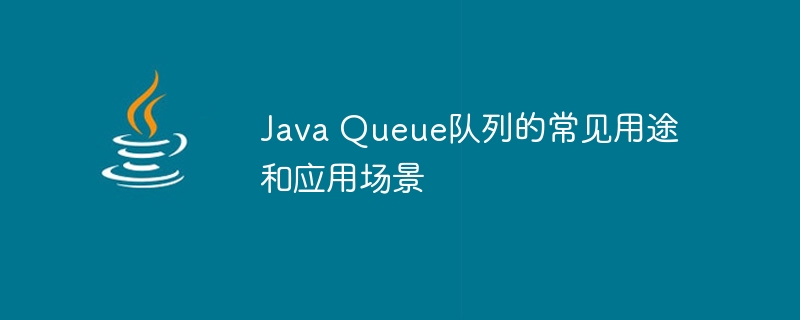

Common uses and application scenarios of Java Queue Queue
Queue (Queue) is a common data structure that follows the first-in-first-out (FIFO) principle. In Java, Queue is an interface that inherits the Collection interface and adds some additional methods on top of it. Queue has many implementation classes, such as LinkedList and ArrayDeque.
Common uses of Queue include the following aspects:
The following is some sample code showing the common uses and application scenarios of queues:
import java.util.LinkedList;
import java.util.Queue;
public class QueueExample {
public static void main(String[] args) {
Queue<String> queue = new LinkedList<>();
// 添加任务到队列
queue.add("Task 1");
queue.add("Task 2");
queue.add("Task 3");
queue.add("Task 4");
// 处理任务
while (!queue.isEmpty()) {
String task = queue.poll();
System.out.println("Processing task: " + task);
}
}
}In this example, we create an instance of LinkedList as a queue and send it to the queue Four tasks have been added. Then we use a while loop to continuously remove tasks from the queue and process them until the queue is empty.
By using queues, we can achieve orderly scheduling of tasks and ensure that tasks are processed in the order they are added.
In addition to LinkedList, Java also provides other queue implementation classes, such as ArrayDeque. According to different scenarios and needs, we can choose the appropriate queue implementation class to use.
In summary, Java Queue is a very useful data structure with many application scenarios. It can be used in scenarios such as task scheduling, cache processing, and data synchronization, and can be adapted to different needs by using different queue implementation classes. I hope this article can help you better understand and apply Java queues.
The above is the detailed content of Java Queue queue usage scenarios and common applications. For more information, please follow other related articles on the PHP Chinese website!




